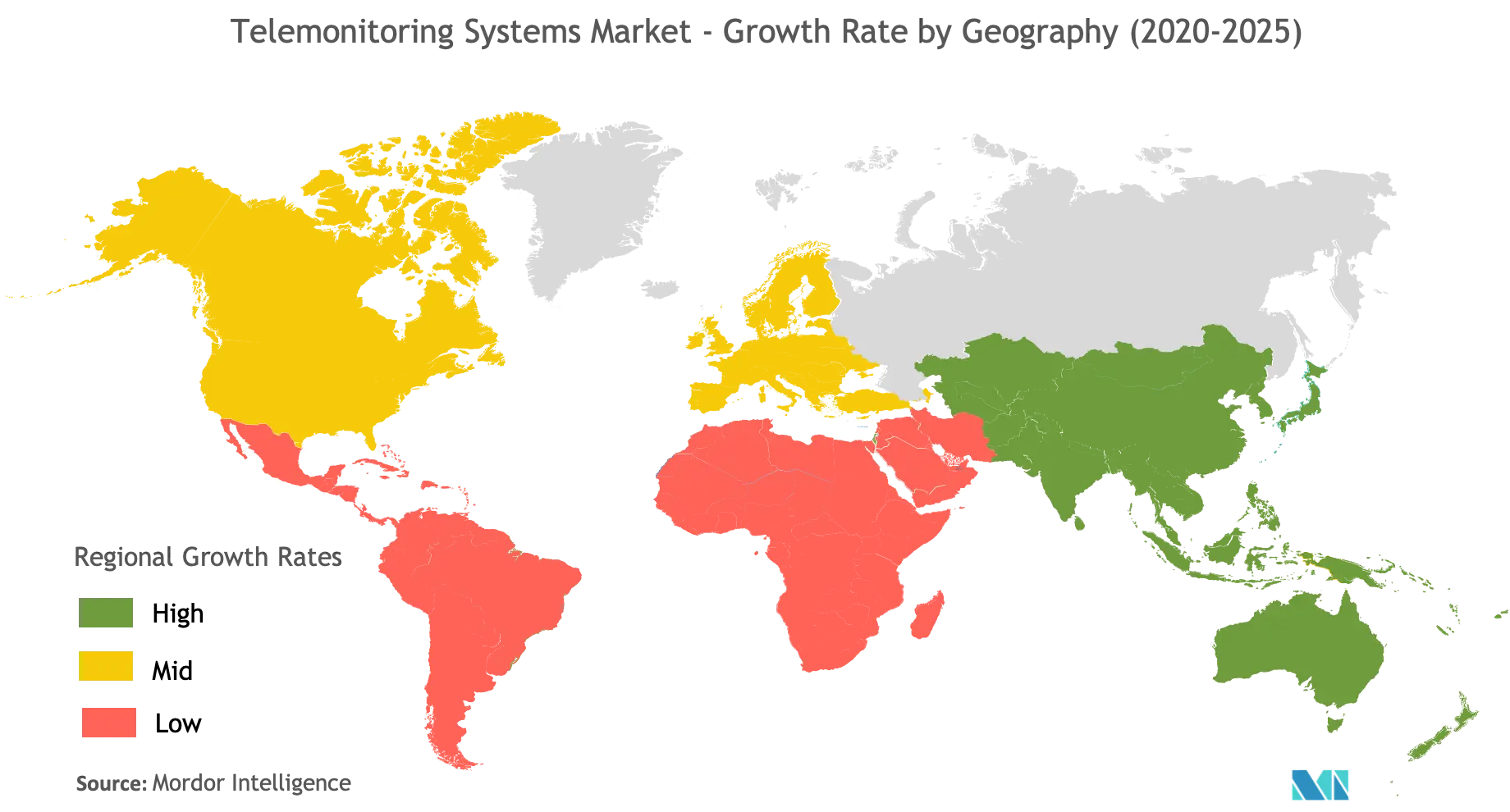Market Trends of Telemonitoring Systems Industry
This section covers the major market trends shaping the Telemonitoring Systems Market according to our research experts:
Cardiac Telemonitoring System Accounts for Significant Share
- The adoption of telemonitoring in heart ailment patients is anticipated to grow at a steady rate as they reduce the cost by significantly reducing emergency hospitalization, provide continuous monitoring, and patient for accurate treatment. There has been an increasing interest regarding the impact of telemonitoring devices and its ability to reduce the increasing burden of chronic diseases, including chronic cardiovascular disease (CVD), on healthcare systems.
- It is said that CVD is one of the world’s largest killers and claims more than 17.5 million lives across the world. Cardiovascular disease (CVD) produces immense health and economic burdens, globally. Across Australia, each year, as many as 30,000 out-of-hospital cardiac arrests (OHCAs) occur, and unfortunately, the death rate remains at 90%, cementing OHCA as one of the leading causes of death in Australia.
- Further, telemonitoring may serve as a vital conduit for improving hypertension control and reducing the economic burden that stems from the costly hospital stays that result from acute events related to hypertension.
- For instance, the LifeWatch MCT 3 Lead is a mobile cardiac telemetry (MCT) product that detects, records, and wirelessly transmits asymptomatic and symptomatic arrhythmia to clinicians for analysis. The four wearable cardiac electrodes are connected to a smartphone via Bluetooth. If an arrhythmia is detected, the smartphone automatically sends the data to a monitoring center for review and notifies a doctor if required.
- The capability and efficacy delivered by cardiac devices with RPM, specific devices with wireless technology, propelled the management of cardiac device patients to the next level and is also redefining the standard of care for patients with implanted devices. Remote patient management of cardiac devices provides a safe, outcomes-based, and scalable platform for the management of cardiac patients with implantable devices.
- Further, the country such as Germany is witnessing growth in mobile health deployments in Europe, with different solutions being offered and services being delivered through varied means, from simple SMS to complex apps, where the primary focus is on remote monitoring of patients suffering from chronic diseases. For instance, T-Mobile has a cardio messenger service in Germany that provides remote cardiac monitoring. Telefonica's 'help at hand' service provides location information on dependent people (e.g., the elderly), coupled with tracking and geo-fencing. It also supports emergency and alert signals that are handled by its alarm receiving center.
- Furthermore, players, such as Abbott Laboratories, launched the latest in Insertable Cardiac Monitor (ICM) across India in December 2019, which helps in providing patients access to the world's first and only smartphone with compatible ICM. The technology is designed to assist physicians remotely identify cardiac arrhythmias, atrial fibrillation (AF) in order to help guide appropriate therapy.

Asia-Pacific to Witness Significant Growth
- Many Asian countries rely heavily on technology to assist in day-to-day living, from smartphones to smart homes. As technology advances, it brings new opportunities to enhance the well-being and quality of life of its users. Within Asia, India, Japan, and Singapore are emerging as crucial health tech hubs, concentrating many startups and attracting a significant portion of investments.
- As per the United Nations Population Fund and HelpAge India report, the number of elderly persons in the country is expected to grow to 173 million by 2026. These factors are driving several players to innovate and introduce different telemonitoring solutions in the market. For instance, Abbott provides Insertable Cardiac Monitor (ICM) across India, offering patients access to a smartphone-compatible ICM. The technology is designed to further help physicians remotely identify cardiac arrhythmias.
- Furthermore, several companies operating in the Singaporean region are witnessing economic prosperity, with an unprecedented boom in sales. Owing to the surge in demand, many market players are introducing solutions catering to different patient requirements. For instance,myHealth Sentinel Pte Ltd is offering TeleMetrix+, which is the first commercial cloud-based telehealth service in the Singapore that enables patient vital signs, such as blood pressure, blood sugar, weight, and temperature, to be remotely monitored and tracked by the doctor.
- Further, product innovation in terms of adding features, enhancing software, and other functionality is expected to differentiate vendors. In September 2019, in China, GE Healthcare launched the Edison AI platform in China by signing an MoU of the strategic partnership with five local software development companies to develop applications for the platform. Under the MoU, GE would cooperate with the five software vendors to develop the platform's applications in China and propel the growth of the market.
- Moreover, with the spread of COVID-19, several companies from the region have launched solutions, specifically catering to the need of the hour. For instance, in 2020, Defense major Bharat Electronics Ltd (BEL) developed a telemonitoring system, along with the All-India Institute of Medical Sciences (AIIMS), Rishikesh. The device has non-invasive sensors to measure the main parameters of the COVID-19 patient's health - temperature, pulse rate, SPO2 (saturated oxygen level), and respiration rate.


